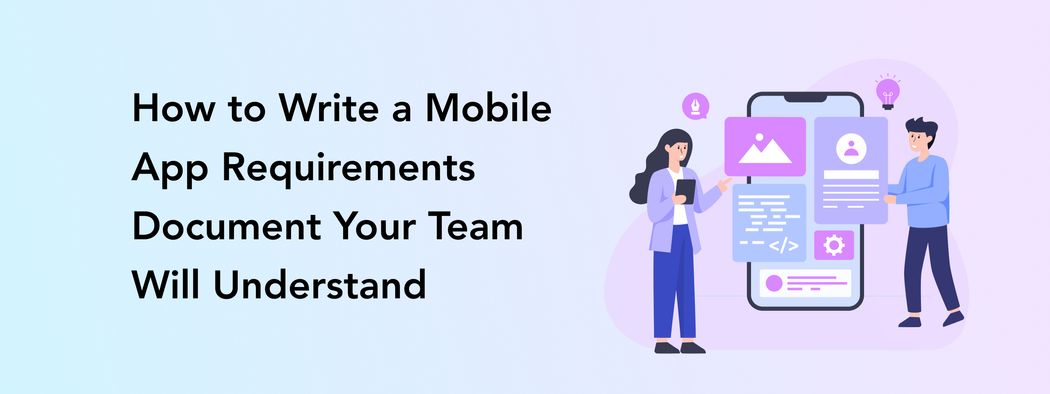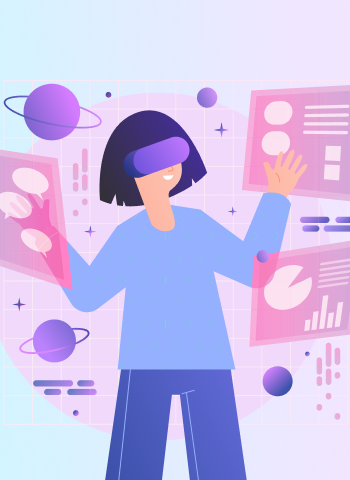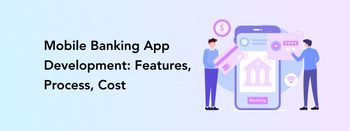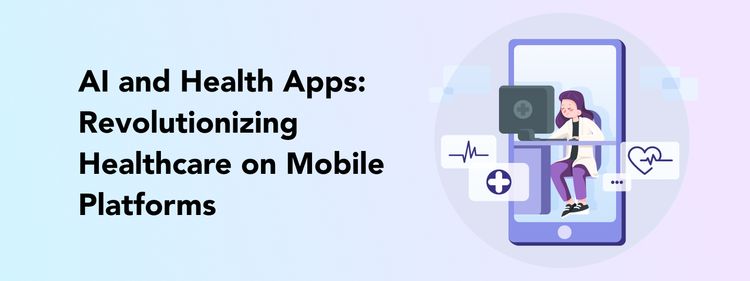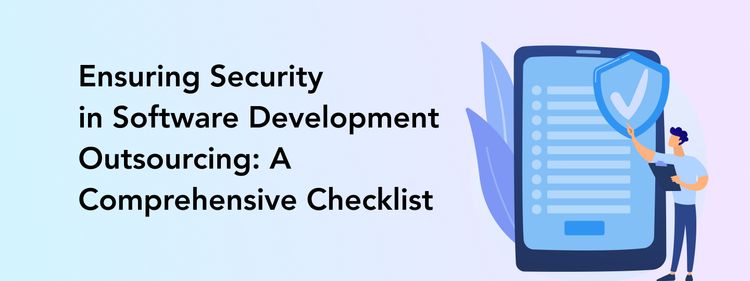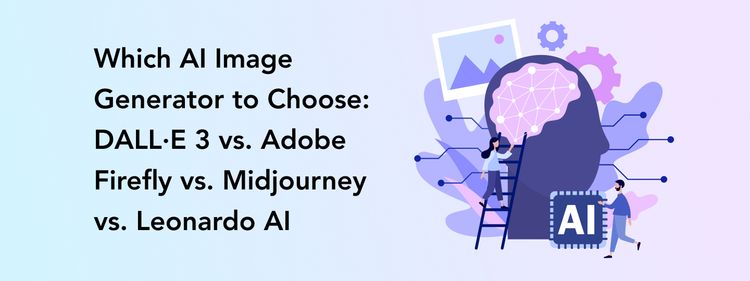Suppose you are collaborating with a mobile app development company for the first time. It might come as a surprise that after the introduction meeting and all the contract-signing formalities, a team will request a list of mobile app requirements from you.
That’s right – among UI/UX designers, developers, project managers, and business analysts, there are no mind readers on the team. To deliver a mobile application that matches your expectations, a development team must first learn exactly what you are waiting to see in the end. That’s why you will be writing all of your specifications and expectations in a mobile app requirements document.
This blog post explains what a mobile app requirements document is, why you definitely need to compose one, and which parameters to include.
What Is a Mobile App Requirements Document
A mobile app requirements document is your North Star, guiding your team to your desired result. Metaphors aside, it is a document that outlines all the required parameters to be counted when developing a mobile app for your business.
These parameters range from the feature set and preferred development platforms to budget restraints and business objectives. Usually, a mobile app development team you are collaborating with will have questions for you to answer, so it’s best to get to those ahead and prepare well–researched and thoughtful answers.
Plus, it’s important that you talk to all the stakeholders and get their approval before submitting your mobile application requirements document.
Remember that an app requirements document is not an official document per se. It can be a shared Google Doc, a presentation, a filled-in template from your technological provider, or even a video call.
For example, at Perpetio, we prefer to ask our clients about the requirements face-to-face on a video call so we can pose additional questions and make clarifications. We are recording a call and filling in the requirements documents based on the call ourselves, plus asking you to send references and other materials if needed.
Why It Is Important to Write a Mobile App Requirements Document Beforehand
You might wonder, “Why do I need a mobile app requirements document anyway?” That’s a legitimate question, as writing mobile app requirements is quite some work. Trust us, we don’t pose all those questions just to keep you busy.
There isn’t just one reason to make an application requirements document. The main motivation for the software development team to collaborate with you on an app requirements document lies in the following:
- Establish a well–defined feature set
- Base UI/UX design decisions on your vision
- Avoid chaos in processes
- Minimize the risks of scope creep and changing requirements mid-process
- Reduce the possibility of reworking and raising the budget
- Align the product development to your business peculiarities and objectives
- Take your budget and deadlines into account
- Assemble a team with corresponding seniority level and technology knowledge
Those are quite enough reasons to dedicate some time to drafting your product vision and needs, don’t you agree?
Let’s now focus on the practical part and discuss which parameters to describe in your mobile app requirements document.
What to Include in a Mobile App Requirements Document
While the formatting and exact content of mobile app requirements documents vary from company to company and can differ depending on the service you need, there are some basic questions you need to prepare answers for.
We provide the list of mobile app requirements we ask our clients here in Pepretio for full-cycle mobile app development services.
App concept and competitors
First things first, tell us about your app's idea.
- What's the core concept behind it, and what purpose will it serve? In other words, why are you launching an app, and what do you want users to get out of it?
- Is it an app that requires work on the concept from scratch, or it’s a redesign of an existing product?
- What is your app’s category (e.g., fitness, e-commerce, on-demand services, social media, gaming, etc.)
- Also, we need to know your main competitors in the app world and who are your main inspirations. Are there any existing apps that you admire or ones with a similar idea that you will be in the same arena with?
This information helps us understand what makes your app unique and where it fits in the grand scheme of things.
Business goals
Now, let's talk business.
- Are you starting from scratch with a brand–new startup, or is this app a new addition to your existing business?
- Why are you launching this app? Is it for marketing, improving customer service, or streamlining your business operations?
- And, of course, the big question: What are your revenue expectations? Will this app be the main source of your business’s income, some extra revenue, or do you not expect it to be a direct source of money?
- Is there a monetization strategy you have in mind (e.g., freemium model, in-app ads, paid app), or should we take care of it?
Sharing your business goals helps us align our efforts with your objectives, like ensuring we're all rowing in the same direction on this business boat.
You can apply a SWOT analysis framework to make conclusions about the current market state or trust the development team with this task.
Remember that, in any case, the investment you make in the app should come back, so knowing your business background and goals with this product will help the development team adjust the strategy for the app to bring revenue.
User requirements
Time to think about who you are targeting with your application.
- What are your target audience’s age group, lifestyle, and social background?
- Which geographical regions and languages are you targeting?
- What issues are your potential users facing that your app can solve?
- With which requests are they turning to your app?
- Which device types (smartphone, tablet, etc.) and OS (Android, iOS) do your potential users prefer?
- What are the parameters they value a lot in a digital product (e.g., simplicity, unusual design, wearables integration)
Based on your input, we usually create a user persona – these are imaginary users of your future app. We describe the smallest details about them, from work life to hobbies. Such methodology helps us have a clear understanding of who we are designing an app for and what they would be happy to see.
Admin panel functionality
Now, let's talk about the control center of your app – the admin panel. You must consider which backend features your app should have and which controls a development team needs to add.
The questions you need to answer include
- Does your app need user management? Are there different user roles or access levels to consider (e.g., shop owner, customer, teacher, student, etc.)?
- Will the admin panel allow you to manage app content, such as text, images, and videos?
- Do you need reporting capabilities for tracking app performance and user engagement?
- Are you interested in using a pre-designed admin panel template, or do you prefer a custom-built solution?
- Does your app need order management functionality?
- Do you need database integration?
- Do you want to establish different levels of administrative access, or should it be a one-level access?
It’s normal if you don’t know the answers to some of these questions or find it difficult to navigate the app’s backend structure – you can always discuss it with your mobile app development team and have them recommend the best composition.
Functional requirements
A feature set is what will attract and retain your users in the first place, so it’s crucial you describe all the app’s functionality in great detail and stick to it throughout the development process.
Your feature set specifications are called functional requirements, as they describe which functions an app needs to perform.
To create a list of functional requirements, consider the following questions:
- Does your app require a user login? If so, what methods should be used for login (cellphone, email, Facebook, Gmail, Linkedin, username, etc.)?
- Should users be able to create content within the app? If yes, what types of content should users be able to create (camera-photo, camera-video, gallery-photo and video, audio recording, live streaming)?
- Does the app need to support content playback? If it does, what types of content playback are necessary (e.g., search, feed, map, music player, video player, etc.)
- Do you envision having user profiles in the app? If so, what elements should be included (user profiles, onboarding, user settings, contacts access, multi-language support, etc.)
- Are there any social features you'd like to include in the app? If yes, please specify which social functions you'd like to integrate, such as live chat, group chat, follow/unfollow, favorites, gamification, like/unlike, sharing in social media, comments, rating).
- Will the app involve in-app purchases and payments? If payments are necessary, do you plan to integrate payment services like PayPal, Stripe, or others?
- Should the app have a shopping cart and order management system?
- Are there any specific third–party integrations you require? If yes, please specify which integrations are needed, such as Shopify, Crashlytics, SMS services, Firebase, push notifications, ads integration, or connections to devices via Bluetooth or WiFi.
Walking us through your precise requirements for the app’s functionality will help the team come up with a complete feature set, create a design that matches the mentioned functionality, and make precise estimations of the time needed for the development.
UI/UX design requirements and references
In this section, let's focus on your app's visual and user experience aspects. Here's what we need to know from our clients:
- Do you already have wireframes or any other design elements completed? Do you have a logo or branding for us to use?
- Describe the level of customization you want for your app's UI/UX. Are you looking for a unique and highly customized design, or can we go for standard UI elements for each of the OS?
- Would you like to include illustrations, animations, or other visual elements in your app?
- We ask every client to send us any existing apps or UI designs you admire and want us to use as references for your app. This can help us align with your design preferences. These can be apps, websites, or any digital products. You can even send some pictures to use as a mood board.
- Do you have a preferred color scheme or specific colors associated with your brand or vision?
- Do you have preferred fonts or typography guidelines for your app's design?
A UI/UX designer will consider your preferences to assemble an interface that matches your vision. Usually, you will first receive a mood board with references for the app and the designer's vision, then wireframes outlining the user interface navigation, and later prototypes with all the graphic elements.
Technical specifications
While you can fully rely on your development team to make effective decisions about the technological stack, they need some basic input from you to know in which direction to move.
The information they will need involves:
- Which platforms do you intend to target (iOS, Android, a web app, wearables apps, etc.)?
- Are you leaning towards a native app development approach or a cross–platform solution?
- Do you want to integrate any specific technology, like augmented reality?
- Do you consider any technologies or programming languages for your app's development?
Think of this as setting the foundation for your app's technical architecture.
Team level and composition requirements
Now, let's talk about the dream team you have in mind:
- What are your expectations regarding team seniority levels (junior, mid-level, senior developers)?
- How many people do you see working on the project, and in which roles? For example, one UI/UX designer, two developers (for iOS and Android), a project manager, a business analyst, etc..
- Do you require a dedicated project manager to oversee the development process and keep everything on track?
- What is your in–house team composition, and will any specialists from your side take part in the development process?
- Who will be the contact person collaborating with us the most?
- Are there any specific roles or skill sets you believe are crucial for your project's success, like a QA specialist, business analyst, etc.?
- What collaboration model do you prefer (e.g., a dedicated team, a time&materials model, in-house team augmentation, etc.)
Don’t panic if you are not quite sure how many people you need on the team and what the collaboration model should look like – a development company you are collaborating with will consult you on the most cost-effective and productive team composition.
Scope of work, deadline, and budget limitations
Finally, time to get pragmatic and answer the big questions of deadlines and budgets.
Your team will want to know about these:
- What's the scope of work for this project? Are you looking for full–cycle development, including ideation, design, development, and testing, or just specific services like development?
- Do you have a particular deadline or timeline in mind for the project's completion?
- Are there any budget constraints or limitations that we should be aware of? What is your maximum budget for this project?
Think of this as drawing the boundaries of your project. These details will help us tailor our services to meet your specific needs, timeline, and financial considerations.
Consider Perpetio Your Trusted Partner
Any successful process starts with clearly defined goals and careful planning. Writing out all of your expectations in a mobile app requirements document not only gives your team a better understanding of what result you want to achieve but also organizes all the ideas and plans you have in your head.
As you embark on the exciting journey of bringing your app idea to life, we want you to know you're not alone. At Perpetio, we're more than just developers; we're your dedicated partners in app development.
We rely on a holistic approach to app development and do more than just write code – we care about the result, and that’s why we need to ask all those questions about your business goals and target audience.
Let’s work together – we are open to new mobile app development projects!
